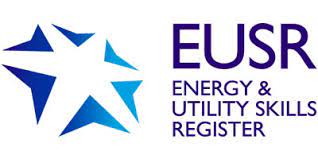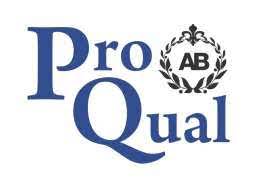Utility Surveys
(BSI) PAS128:2022 is the current specification for underground utility detection, verification and location in the UK. The purpose of a PAS128 Survey is to supply the end user with all the critical information that is necessary to plan, design, or construct with the prior knowledge of what physically exists below the ground of their project. CMS Surveys Limited are committed to providing each one of our clients with the most accurate PAS128 Survey, undertaken with the highest levels of attention to detail and professionalism. This permits any design or intrusive construction works to be completed with the greatest of confidence. We understand that the success of any project, be it in the design or construction phase, is heavily dependent on having the most accurate Buried Service Information available. Our clients can rely on us to provide a comprehensive PAS128 Survey in the most user-friendly and cost-effective manner, every time no matter the scope or scale of the project. This is down to the facts that CMS Surveys has an enthusiastic and skilled team that uses the most up to date Electro Magnetic Location (EML) & Ground Penetrating Radar (GPR) equipment and that our personnel have participated and continue to participate in a wide range of courses to continuously expand their repertoire. All our personnel undertaking PAS128 Surveys are not just highly experienced but are qualified professionals, qualified to level 3 in utility mapping & surveying as a minimum. Our project managers hold the level 5 qualification.
We always conduct PAS128 Surveys using both Electromagnetic Locators (EML) and Ground Penetrating Radar (GPR). Combining these two technologies with the most robust methodologies we are able locate and map most services buried underground*. The methodology behind any PAS 128 survey is critical, PAS128 requires a planning process for each project, this involves site specific Risk Assessments, Method Statements and a program of works.
The PAS128 Specification is split into four Survey Types:
PAS 128 Survey Category Type D - Desktop Utility Record Search. The first step in utility location is to write to the utility affected by your project and request a plan of their apparatus
PAS 128 Survey Category Type C – Composite Utility Drawing produced from Desktop Search, but with site reconnaissance to match utility record with physical utility street furniture as a best fit.
PAS 128 Survey Category Type B - Physical on-site utility detection utilising multiple forms of Geophysical instruments. There are 4 different survey methods M1-M4 (see table) to choose from depending on what particular site requires surveying. For example, an undeveloped greenfield site where we would not expect to find many buried services, survey method M1 would suit, whereas sites such as those in city centre environments, we would expect to heavily congested with buried services, therefore the survey method M4 or M4P would be followed when undertaking the survey. The output from this survey shall be each located buried service, annotated to show depths and Quality Levels (QL) B1(P) – B4(P)annotated for horizontal and vertical detection accuracy. We are also geared up to undertake post processing of site acquired GPR data. This data can be manipulated in proprietary software to gain better clarity of the survey data, gaining better results within difficult environments. The data can also be used to identify potential areas of voiding.
PAS 128 Survey Category Type A - Utility verified and positioned by physical identification. This may be done by vacuum excavation, hand dug trail pitting or by visual inspection within utility chambers.
PAS 128 Survey Category Type D - Desktop Utility Record Search
We can provide detailed Desktop Utility Searches, quickly and cost effectively.
Developments, feasibility studies and most on site works require some sort of utility survey to establish the location of assets such as pipes and cables. The first step in utility location is to write to the utility affected by your project and request a plan of their apparatus. If your company follows:
British Standards Institution PAS128, Specification for underground utility detection, verification and location
HSG47 Avoiding danger from underground services
The Construction (Design and Management) Regulations 2015
You could spend several weeks writing many individual letters to various utilities chasing up payments to these utilities and waiting on potential missing plans. This is time consuming, frustrating and not a good use of your time. CMS Surveys offers a Utility Search service, this gives you the opportunity of ordering all your utility search information from your desktop. CMS Surveys have created a large database containing information from utilities that assist us in obtaining a Utility report. By reducing the need to contact utilities unnecessarily we can provide you with a professional streamlined service.
PAS 128 Survey Category Type C - Site Reconnaissance
PAS 128 Survey Category Type C is defined in the BSI document as a site reconnaissance. It is a time efficient, cost-effective way of initially verifying the accuracy of statutory asset record drawings provided in the PAS128 Survey Category Type D desktop search. Dependent on their size most sites can be completed by a PAS128 survey team with a single day visit.
Using a PAS128 Survey Category Type D desktop search, our PAS128 Survey team will visit site to identify and locate (but not lift) all manhole/ inspection chamber covers, valve covers, utility markers, control and distribution pillars/columns, LV power, street lighting, traffic lights, and historic excavation scar lines. Evidence is recorded using appropriate survey equipment and presented within a composite drawing.
PAS 128 Survey Category Type B - Physical on-site utility detection
Using a PAS 128 Survey Category Type D and if available C, our PAS128 Survey team will complete a thorough on-site utility detection survey using the latest Electro Magnetic Location and Ground Penetrating Radar (GPR) equipment to locate buried services within a defined survey area, all findings will be recorded using appropriate survey equipment. The results are presented in a digital model format to the client’s specifications, accompanied by a detailed survey report which includes information on buried services that may require further investigation for greater positioning accuracy using Survey Type A (verification) methods.
STAGE 1 - Electro Magnetic Location Survey (EML)
Our PAS128 survey team will carry out a connectivity survey of the drainage system that runs inside the survey area. They will take their investigation out to the first manhole outside the survey extents where possible to prove connectivity, this includes lifting all manholes, recording all data i.e. pipe diameter, invert levels of all incoming and outgoing pipes, types of sewer and direction of flow. We will use methods like rod and sonde, dye test and sound testing to prove connectivity. Our survey team will operate the hand-held EML The survey team will open all inspection covers, manholes and valves. Directly connect to any services that they can, to enable them to trace all metallic services. They will observe and investigate any other relevant features that are present on site.
STAGE 2 - Ground Penetrating Radar Survey (GPR)
Our PAS128 survey teams currently utilise the Leica DS2000 GPR system (or equivalent) equipment comprising a control, display and recording unit triggered by an odometer wheel and equipped with a range of antennas, perfect for undertaking PAS128 Surveys.
The depth of penetration of the emitted electromagnetic pulse is dependent on the properties of the near surface materials and the frequency of the antenna used. A high frequency antenna provides better resolution whereas a lower frequency antenna gives lower resolution but deeper penetration (perfect for locating those old deep laid water mains!!).
In operation the radar is pushed parallel to the ground surface using an orthogonal grid. Readings are taken by a fully integrated wheel triggering device for accurate measurement location. The operator will collect data along a series of parallel acquisition lines. All survey data is collected digitally using electronic total station and GPS techniques. The collected data can either be marked out onsite or/and recorded and processed remotely using proprietary software and plotted to provide an AutoCAD drawing of the location and depth of the detected targets.
Utility Surveys completed to a PAS128 standard are not compulsory. However, the benefits of minimising any design or construction disruption, as well as having a greater level of confidence in what’s underground, a PAS128 survey provides a much higher standard and a safer working environment.
Using information from Survey Type D and if available C or B, our assigned PAS128 project manager will liaise with client to define the most suitable areas to carry out Survey Type A by excavating ground to expose utilities for visual verification. This information will be presented to client’s specifications in a digital model format, accompanied with a utility survey report.
Why would I consider requesting a PAS128 Survey Type A?
Some of the main reasons for undertaking Survey Type A are:
To confirm exact location and depth of buried services within site area.
To identify any unknown anomalies identified within the survey area while carrying out PAS 128 Survey Type B.
To aid with HSG47 compliance if any ground excavations are required within close proximity to any services.
Survey Type A is achieved by visual inspection of the buried services this can be achieved by 2 methods
By opening/lifting of manhole covers and inspection chambers to visually verify chamber size, pipe size and depths to service.
By trial hole/slit trench excavation to expose any buried services at critical locations within the survey area.
Survey Type A exposes buried services for visual verification of type, depth and location, so can be given quality level QL-A.
A PAS128 Report will be supplied which includes locations of any trial holes/slit trenches excavated, list of buried services that have been visually verified and all survey data relating to them. List of manhole /inspection chambers lifted and all survey data for each one including detailed asset cards detailing assets contained within service and drainage chambers, and where possible supporting photographic evidence. If requested by the client previously supplied digital model format survey data can revised to show accurate location and depths of exposed utilities.
BOREHOLE CLEARANCE SURVEYS
CMS Surveys are well equipped to offer the best service out there when it comes to borehole clearance surveys. Our vast experience in both the geotechnical and buried services industries means that we can offer an unmatched service for borehole service clearance surveys.
Utilising the latest non-invasive technology and industry standard methodologies, we can identify and locate buried services and obstructions within the areas of your proposed exploratory holes prior to the drilling/digging works commencing. All buried services are marked out on site, usually with biodegradable spray paint but we can use alternatives such as road crayons, paint sticks, wooden pegs or marker flags. If your proposed exploratory hole location clashes with a buried utility, then an alternative location will be suggested by our surveyor on site and agreed with your site engineer.
All our surveyors are expertly trained in traditional land surveying. Meaning if your GPS is not up to the job for setting out or recording the geospatial location of your exploratory holes due to poor satellite coverage / no phone signal / tree coverage then we are here to help using our Robotic Total Stations. We can undertake the setting out of any proposed exploratory hole prior to clearance works and, we are able to record the coordinates of any exploratory hole post drilling works.
PAS128 Utility Detection Surveys
GPR Surveys
GPR Void Detection Surveys
Borehole Clearance Surveys

















